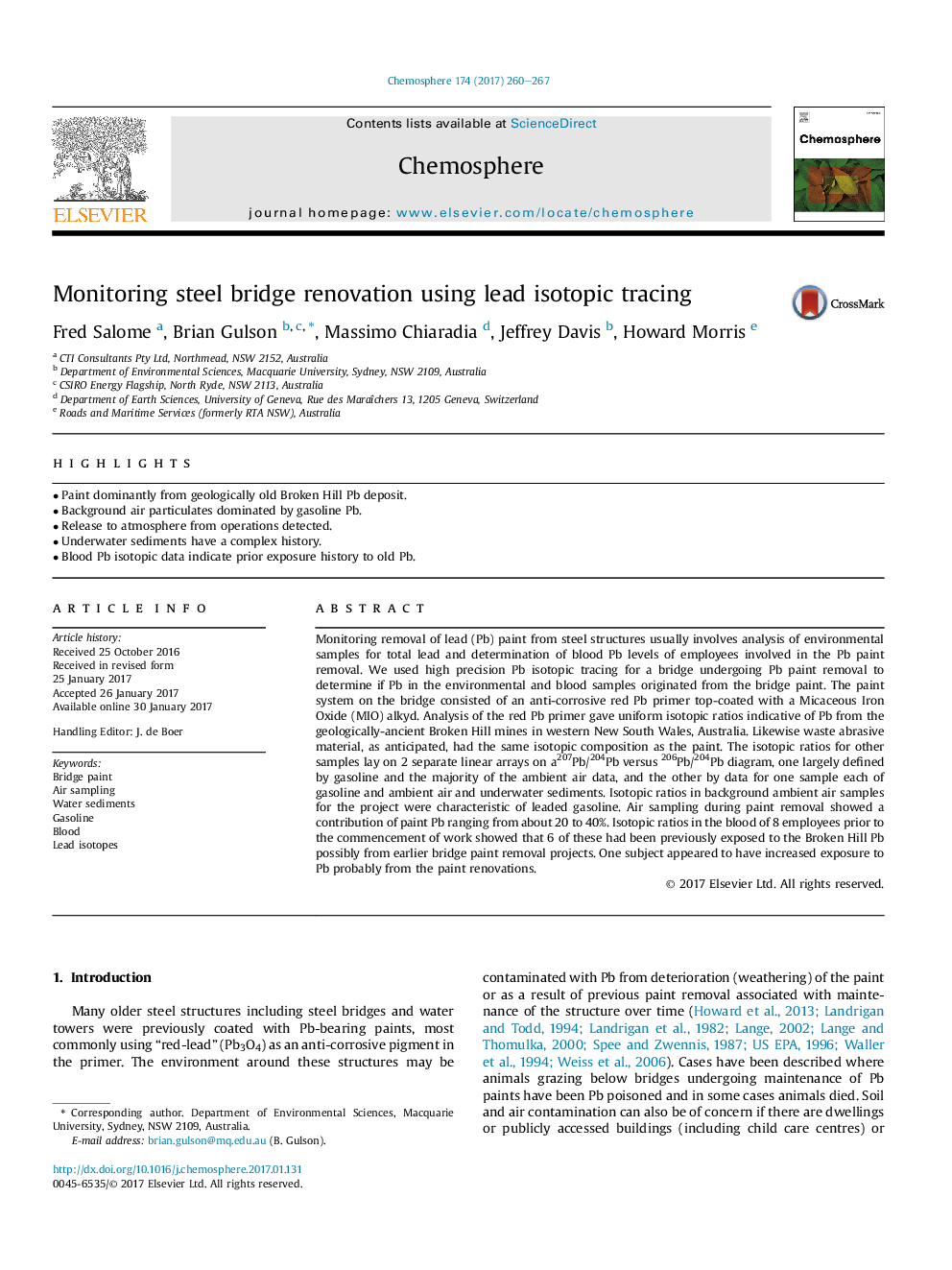| Article ID | Journal | Published Year | Pages | File Type |
|---|---|---|---|---|
| 5747366 | Chemosphere | 2017 | 8 Pages |
â¢Paint dominantly from geologically old Broken Hill Pb deposit.â¢Background air particulates dominated by gasoline Pb.â¢Release to atmosphere from operations detected.â¢Underwater sediments have a complex history.â¢Blood Pb isotopic data indicate prior exposure history to old Pb.
Monitoring removal of lead (Pb) paint from steel structures usually involves analysis of environmental samples for total lead and determination of blood Pb levels of employees involved in the Pb paint removal. We used high precision Pb isotopic tracing for a bridge undergoing Pb paint removal to determine if Pb in the environmental and blood samples originated from the bridge paint. The paint system on the bridge consisted of an anti-corrosive red Pb primer top-coated with a Micaceous Iron Oxide (MIO) alkyd. Analysis of the red Pb primer gave uniform isotopic ratios indicative of Pb from the geologically-ancient Broken Hill mines in western New South Wales, Australia. Likewise waste abrasive material, as anticipated, had the same isotopic composition as the paint. The isotopic ratios for other samples lay on 2 separate linear arrays on a207Pb/204Pb versus 206Pb/204Pb diagram, one largely defined by gasoline and the majority of the ambient air data, and the other by data for one sample each of gasoline and ambient air and underwater sediments. Isotopic ratios in background ambient air samples for the project were characteristic of leaded gasoline. Air sampling during paint removal showed a contribution of paint Pb ranging from about 20 to 40%. Isotopic ratios in the blood of 8 employees prior to the commencement of work showed that 6 of these had been previously exposed to the Broken Hill Pb possibly from earlier bridge paint removal projects. One subject appeared to have increased exposure to Pb probably from the paint renovations.
